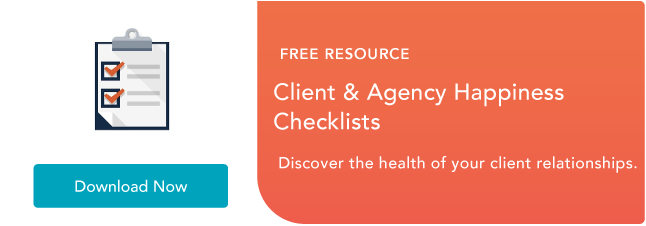Every day, 112.4 billion business emails fly around the world. That's 122 emails sent and received every day per person. Despite the growth of other online communication channels, email continues to multiply. Which means people (including client-type people) are searching for reasons to ignore emails that don't need their attention so they can focus on messages and tasks that do.
If your clients are responding in a timely manner, or not responding at all, the problem may well be that your emails are terrible.
7 Common Email Mistakes That Cause Clients to Ignore You
1) Not Being Clear and Specific About What You Want
What is the purpose of your email? Have you made it obvious to the reader? Perhaps people you email don't reply back to you because they don't know you're expecting anything back from them.
Whatever you need -- a decision, a file, a commitment -- ask for it, and let them know by when you need it. If no response is needed because you're just sharing an update, let them know that too.
You might think you’re asking for exactly what you need, but people still aren't responding. Keep reading. Can they find your request amid everything else in the rest of your email? Do they know you're expecting them, not someone else, to act?
2) TL;DR – Too Long; Didn't Read
We've all gotten these emails. When we see massive blocks of text, we feel exhausted just at the thought of having to parse it for whatever is important. You're not reading them. Why do you expect your clients to?
Excise the fluff. Get rid of all the qualifier words, such as I was hoping, if you could, when you have some time, etc.
You can also remove the extensive retelling of whatever the broader issue is. Definitely, provide enough context in your email so the recipient knows what you're talking about, but only as it relates to the specific need of this email. And keep it brief.
Whatever you're writing, use shorter sentences and simpler words. If you absolutely must write a lot, use short paragraphs, bullet lists, and white space to avoid the appearance of a word tsunami.
3) Copying Too Many People
There are two main dangers to copying too many people on your emails when it comes to getting an answer.
First, no one is responding or getting you what you need because they're assuming someone else on the thread is taking care of it. Call it a permutation of the "bystander effect."
Second, copying too many people is an email habit. If you do it, you probably do it a lot. Which means you've taught people that you often send emails that aren't relevant to them or need their response. You've trained them to put your emails in the low priority category.
4) Sending too Many Emails or Prolonging Email Threads
Closely related to copying too many people, constantly sending emails or irrelevant reply emails, teaches people the same lesson. Everyone has someone's name they dread seeing pop up in their inbox. Don't be that person.
If you want clients to respond to your emails, make sure your emails are substantive.
5) Bad Subject Lines
The rules of email marketing apply to business email. A great email buried under a rotten subject line isn't going to get the attention it deserves. Your email subject lines need to be concise and action-oriented.
Since so many people are sorting through emails on their phones, write your subject lines to work on mobile as well. The same applies to the first line of your email. If that is all they see in a preview pane (on mobile or desktop), use it to give them a reason to keep reading.
Here's a nice refresher on how to write a five star subject line.
6) Bad Manners
Writing short and direct emails doesn't require forsaking all forms of civilized behavior. An email that says nothing but "send me ebook feedback today" is direct and concise. But who wants to respond to that?
Basic letter etiquette still applies, like including a greeting and a sign-off. Email also has its own etiquette worth following, so lose the ALL CAPS. Also, people are seriously put off by bad grammar in emails.
People like helping out nice people. So be nice.
7) Email Wasn't the Right Mode of Communication
We have lots of ways to communicate with clients -- email is merely one option. For some needs, it's not the best option. Quick questions may be better suited to text or a chat app. Some issues require a thoughtful, give-and-take discussion that email can't accommodate. It may be worth it to pick up the phone or have a video chat. This is especially true if the discussion will involve a number of people.
We have a number of social technologies that provide alternate means of communication. Your goal is to get a response, not another email. Before sending the email, consider if it's the communication method that will most efficiently get you what you need.
from HubSpot Marketing Blog http://blog.hubspot.com/marketing/mistakes-clients-ignore-email

No comments:
Post a Comment